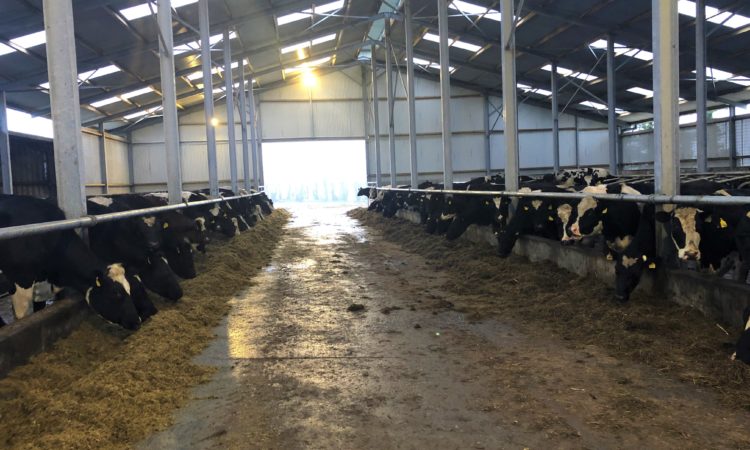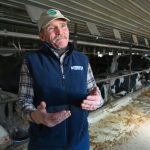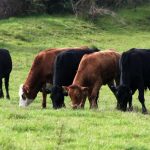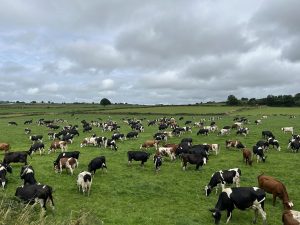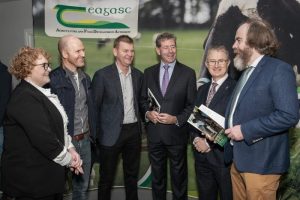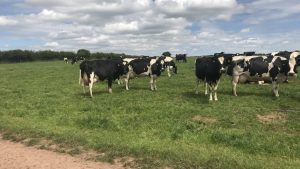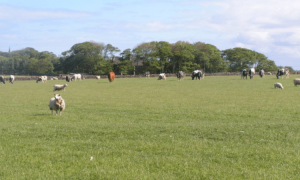
In 2016, Shane was awarded the prestigious Teagasc and FBD student of the year 2016 title and, just last year, he also won the dairy category at the 2019 FBD young farmer of the year awards.
Most recently, Shane has become a participant of the Teagasc and Glanbia Ireland Open Source Future Farm Programme.
Commenting on his involvement in this, he said: “It’s all about information sharing and you are getting access to the best advice as well. I love all the knowledge transfer and information sharing; learning things and then passing on the information.
“We are kind of ambassador-type farmers. We are adopting all the latest technology to show that they do work, and that they are good for the environment, but also that they are good for your pocket as well.
“I was more focused on the economic side of things. I still am, but things are moving a lot more towards the environment now and making things more efficient,” he added.
After visiting Shane’s farm, what was most interesting was Shane’s ambition and overall passion for dairy farming.
He said: “I love the outdoors working with the cows and the job satisfaction is hard to beat.
Currently milking on the farm is a high-EBI herd of 200 cows, but this wasn’t always the case. In the quota years, 120 cows were milking on the farm. All the heifers were contract reared off-farm for the first time last year.
The farm itself is 90ha in size and is divided by a public road. The overall stocking rate is 2.3 LU/ha.
Journey Into Dairy Farming
Dairy farming wasn’t Shane’s first port of call. When he finished school he first attended Waterford Institute of Technology (WIT) where he completed a four-year business and accountancy degree.
“My mother advised me on this; other than that I would have went straight to Kildalton or rushed back home. This was the best bit of advice I ever got.
Following this, Shane went on to complete a diploma in dairy farm management – in Kildalton Agricultural College.
He stated: “We didn’t rush into anything; if we couldn’t grow enough grass we wouldn’t have jumped into anything. I suppose we are at the end of that five-year plan now; we are up to the 200 cows.”
It wasn’t until 2016, when Shane finished his studies, that he came home to farm full-time.
He remarked: “It was the right time to come home; I was mature enough and I was focused and motivated to do what I wanted and my father was ready to take a step back.
“I know a lot of my friends went straight home after school – in 2009 – and they are burnt out already. They are sick of it. Whereas I’m only getting going,” he added.
Herd Performance
In terms of milk production performance, approximately 470kg of MS/cow and just over 6,000L/cow were produced in 2019 – with 800kg of meal fed per cow – at an average of 4.21% butterfat and 3.47% protein.
Shane explained that one part of being involved in the Open Source Future Farm Programme is to consolidate cow numbers and mature the herd. At present, about 50% of the herd are first or second-lactation cows.
“If we can hold the numbers, cull out the few poor performers and mature the herd we will be able to get our production up.
“We would be hoping that when the herd matures they could reach the 500kg of MS/cow mark – with about 700kg of meal/cow,” said Shane.
Last year, in 2019, an empty rate of 9% was achieved after a 12-week breeding season. This entailed six-weeks of AI and then an Angus bull was let out for the final six weeks.
Spring Labour-Saving Techniques
On the day of the visit, calving hadn’t kicked off, but was due to start in the first week of February – with 95% expected to calve in six weeks.
To ease the workload in the spring, a Level 6 student would be working on the farm from January 30 to May 8.
Shane explained that they will be getting a contractor to put out some of the fertiliser and spread the slurry in the spring-time too.
“That is part of the program as well, and the use of protected urea. I’m always willing to try new things and embrace change,” he added.
There are a number of technologies – on the farm – which Shane pointed out that are a huge help in the spring-time when it comes to easing the workload.
A new collecting yard, backing gate and drafting system were installed on the farm in 2018. “We focused on getting the grazing infrastructure right first; then the concrete came after,” Shane commented.
He added: “The cow flow is a lot better now and it was really worth more than a few extra units in the parlour.”
A cubicle sweeper is also on hand when it comes to sweeping and liming the cubicles. “This is a huge labour saving,” Shane said.
Regarding calf rearing, the heifer calves move onto an automatic calf feeder once they reach one week-of-age. A milk trolley is then used to feed the bull calves which has a milk pump installed.
“There is hardly any bucketing [of] milk at all. All the calves are close to the yard as well, which makes a big difference.
“The cows all calve in an open shed too; so there are no individual pens or anything like that. We have a calving camera in the shed which I can look at in my room. It is another labour-saving technology.
“They would usually be out during the day by early February, which makes a big difference when trying to reduce the workload and for cow health,” Shane further noted.
A new 110-cubicle shed – that is now adjoining an existing shed – was also constructed on the farm in 2018. This brought total cubicle numbers up to 210 cubicles.
“The new shed makes a big difference even for grouping cows, cow comfort and for inspecting cows,” highlighted Shane.
Future Plans
As the farm is divided by a main road, Shane is hoping to install an underpass on the farm in the future – once he consolidates the herd – for easier access to the whole farm.
Currently, the land across the road is only grazed during the shoulders of the year and is cut for silage outside of this window.
“If we could connect the whole farm, it would be ideal because it is the same distance up to the fields across the road as it is to those [on] this side of the road. The land is better across the road too; it is drier,” Shane concluded.
